Spring 2019 | Jacob Radford, a Ph.D. student at North Carolina State University and visitor to the DTC during June of 2018, investigated the forecast skill of the High-Resolution Rapid Refresh (HRRR) model for banded snowfall events. In particular, he evaluated the HRRR’s ability to capture the location, areal extent, orientation, and aspect ratio of these locally enhanced regions of reflectivity. In theory, snowbands should be adequately resolved by the HRRR thanks to its fine grid-spacing, but model skill has not yet been assessed… Read More
Visitors: Forecast Skill of the High-Resolution Rapid Refresh (HRRR) Model for Banded Snowfall Events
Visitor: Jacob Radford
Community Connections: Model Evaluation for Research Innovation Transition (MERIT)
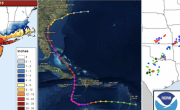
Spring 2019 | The Model Evaluation for Research Innovation Transition (MERIT) project provides a critical framework for physics developers to test innovations within their schemes using selected meteorological cases that have been analyzed in depth. Comparing their results to baseline MERIT simulations will allow developers to determine whether their innovations address model shortcomings and improve operational numerical weather prediction. For the DTC’s AOP 2018, three high-impact global FV3 baseline cases were selected for in-… Read More
Did you know?: There are Specialized Tools to Evaluate Innovations for NWP of TC's
Spring 2019 | Model Evaluation Tools – Tropical Cyclone (MET-TC) was first developed in 2012 by the Developmental Testbed Center (DTC) as part of the Hurricane Forecast Improvement Project (HFIP) to provide a set of tools to aid in tropical cyclone forecast evaluation and verification. The primary goal of MET-TC was to replicate the functionality of the National Hurricane Center (NHC) verification software while utilizing the modular tools available within the MET software framework. The MET-TC software was first released with METv4.1… Read More
Software Release: Announcing UPP V4.0 Release

2019-03-19 | Dear UPP Community, The Developmental Testbed Center (DTC) is pleased to announce the release of the Unified Post Processor Version 4.0. The UPP has a new webpage! Please update your bookmarks. https://dtcenter.org/community-code/unified-post-processor-upp Major Improvements and New Features include: Support for FV3GFS model output in NEMSIO format Updated User Guide documentation to include information on post-processing the FV3GFS model output. New output control files to produce fields from FV3GFS model output.… Read More
Lead Story: The Community Leveraged Unified Ensemble in the NOAA/Hazardous Weather Testbed Spring Forecasting Experiments

Winter | The Community Leveraged Unified Ensemble, or CLUE, is an unprecedented collaboration between academic and government research institutions to help guide NOAA’s operational environmental modeling at the convection-allowing scale. The CLUE is produced during the annual NOAA Hazardous Weather Testbed (HWT) Spring Forecasting Experiment (SFE), where the primary goal is to document performance characteristics of experimental Convection-Allowing Modeling systems (CAMs). The HWT SFE is co-organized by NOAA’s National Severe… Read More
Director's Corner: NOAA’s emerging effort in community modeling
Ricky Rood, University of Michigan
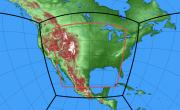
Winter 2019 | I am the Co-chair, along with Hendrik Tolman, of the Unified Forecast System – Steering Committee (UFS-SC), one of the governance bodies in NOAA’s emerging community modeling effort. The overall goal of the UFS activity is to have a unified forecast system that can be configured to meet the many applications in NOAA’s product suite.
Who's Who: Tracy Hertneky
Winter | Tracy Hertneky "floats through the air with the greatest of ease" -- or does she? This daring young woman flying in an aerial silk (one of her many hobbies is being an aerialist - like in the Cirque du Soleil)-- doesn’t actually like to fly and requests the superpower to be able to teleport. She dreams of visiting places from New Zealand to Belgium (loves the beer) and the Summer Olympics! Plus, the ability to teleport would certainly be more efficient for travel and help in her role as a new mom to Juliet who was born… Read More
Bridges to Operations: Use of Model Evaluation Tools in NWS QPF Verification
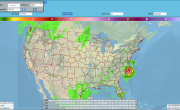
Winter | The National Weather Service (NWS) Meteorological Development Laboratory (MDL) is developing an automated, nationally consistent and centralized service that verifies Quantitative Precipitation Forecasts (QPF). This QPF Verification Service (QPFVS) will provide objective assessments of the predictive skill of numerical model guidance and official NWS forecasts to help increase the accuracy of quantitative precipitation forecasts. QPFVS will be implemented as a component of a larger gridded verification system with… Read More
Visitors: Towards a better understanding of the vertical aerosol distribution in the atmosphere
Visitor: Barbara Scherllin-Pirscher
Winter | On 14 April 2010, increasing volcanic activity, including explosive eruptions, were observed at the Icelandic volcano Eyjafjallajökull. The volcano was largely unknown by the general public until then. On that particular day, however, the volcano started ejecting fine ash into the atmosphere, which was advected towards continental Europe. Major disruptions of the air traffic across western and northern Europe were necessary in order to ensure aviation safety. Several countries closed their airspace, affecting… Read More
Community Connections: The DTC helps the research community enhance the GSI/EnKF operational data assimilation system
Winter 2019 | Gridpoint Statistical Interpolation (GSI)/Ensemble Kalman Filter (EnKF) are operational data assimilation systems, open to contributions from scientists and software engineers from both operations and research. The development and maintenance of NOAA GSI/EnKF data assimilation systems are coordinated and managed by the Data Assimilation Review Committee (DARC), which incorporates all major GSI/EnKF data assimilation development teams in the United States within a unified community framework. DARC established a code… Read More
Did you know?: The Formal FV3GFS Evaluation
Winter | Implementing the GFS global model with the FV3 dynamic core upgrade into the National Centers for Environmental Prediction (NCEP) Production Suite will be the first step towards a Unified Forecast System (UFS). But prior to any new code being delivered to NCEP Central Operations, the NCEP Director must decide whether the implementation should occur, based on recommendations from the Environmental Modeling Center (EMC) and customers and stakeholders in the field at the conclusion of a formal evaluation period. EMC’s … Read More
Software Release: Community GSI version 3.7 and EnKF Version 1.3

2018-11-07 | The Developmental Testbed Center (DTC) is pleased to announce the release of the 2018 Community Gridpoint Statistical Interpolation (GSI) Version 3.7 and Ensemble Kalman Filter (EnKF) version 1.3 data assimilation system. This release includes the latest code as of October 30th of 2018, new compiling system, and updated run scripts with updated User's Guide and on-line tutorials. … Read More
Software Release: HWRFv4.0a Release
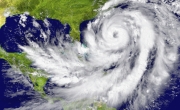
2018-11-05 | The DTC Hurricane team is pleased to announce the release of version 4.0a of the community HWRF modeling system. The release includes all components of the system: scripts, data preprocessing, vortex initialization, data assimilation, atmospheric and ocean models, coupler, postprocessor, and vortex tracker. Both the Scientific Documentation and the Users Guide have been updated. Users may go to http://www.dtcenter.org/HurrWRF/users to download codes, acquire datasets, and get information and documentation about HWRF.… Read More
Software Release: METplus 2.0 with MET 8.0 and METviewer 2.8 components
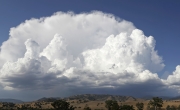
2018-09-28 | The Model Evaluation Tools (MET) development team at the DTC is pleased to announce the release of a multi-component verification capability called METplus. It includes METplus version 2.0, MET version 8.0 and METviewer version 2.8. METplus is a suite of Python wrappers and ancillary scripts to enhance the user's ability to quickly set-up and run MET. METviewer is a database and display system for aggregating and plotting MET output. In the future, a user will be able to check everything out through the METplus GitHub… Read More
Software Release: GMTB public release of CCPP v2.0

2018-08-30 | The DTC’s Global Model Test Bed (GMTB) is pleased to announce the public release of the Common Community Physics Package (CCPP) v2.0, containing a library of physical parameterizations (CCPP-Physics), and the framework that connects it to host models (CCPP-Framework). In this release, the CCPP has been bundled with the GMTB Single Column Model (SCM) v2.1, and contains updated physical parameterizations of the GFS suite plus the GFDL microphysics scheme. The CCPP has also been integrated with the experimental version of… Read More
Pagination
Copyright © 2024. All rights reserved.